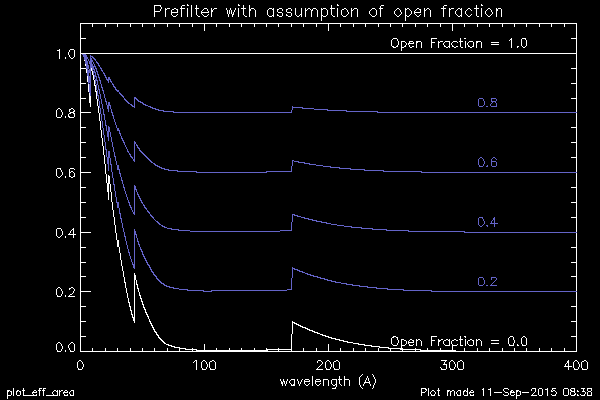
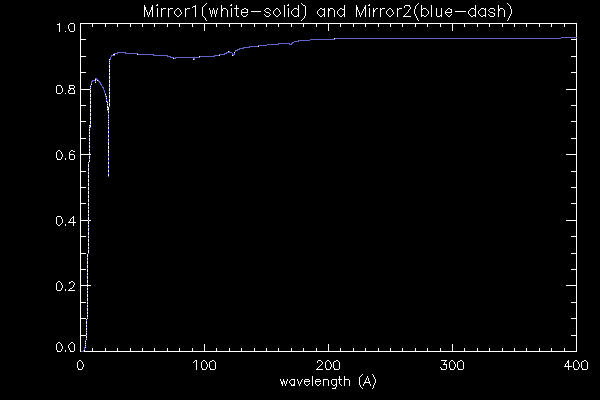
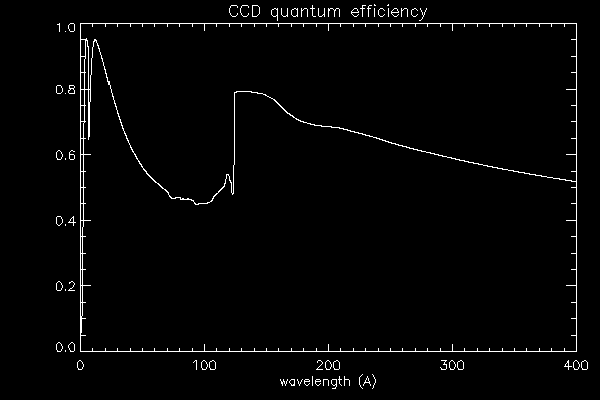
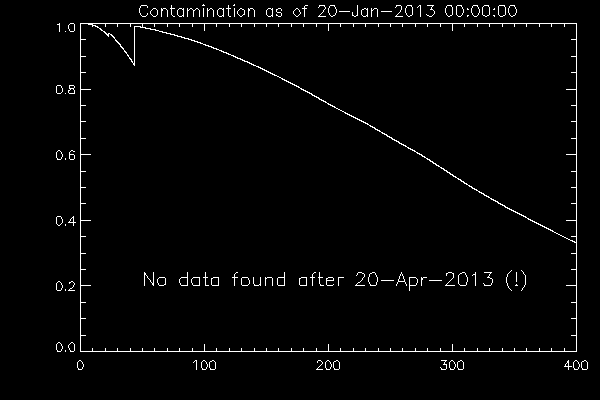
[Temperature response func.] = [Factor(geometrical, etc.)] * [Model Solar Spectra] # [XRT Effective Area]
(T) (T, λ) (λ)
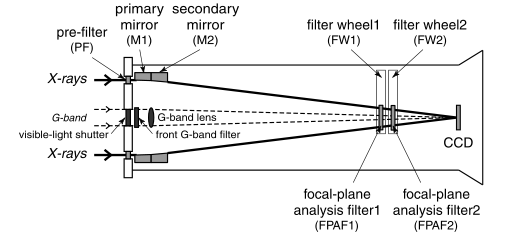
[Effective Area] = [aperture] * [prefilter] * [mirror1] * [mirror2] * [filter1] * [filter2] * [ccdqe] * [contamination]aperture=2.28 cm^2
 |
 |
 |
 |
Effective Area modified partially opened prefilter (without X-ray filters).
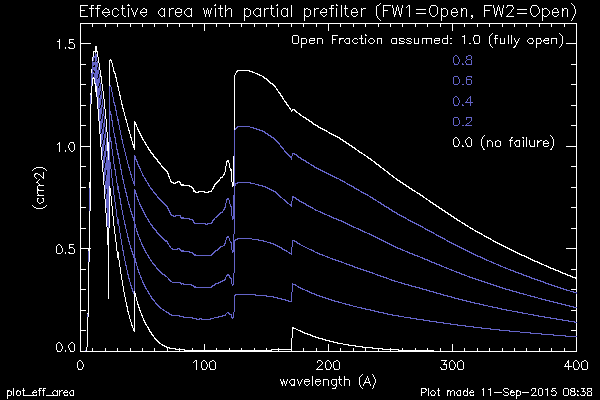
| Open/Al-mesh | Open/Ti-poly |
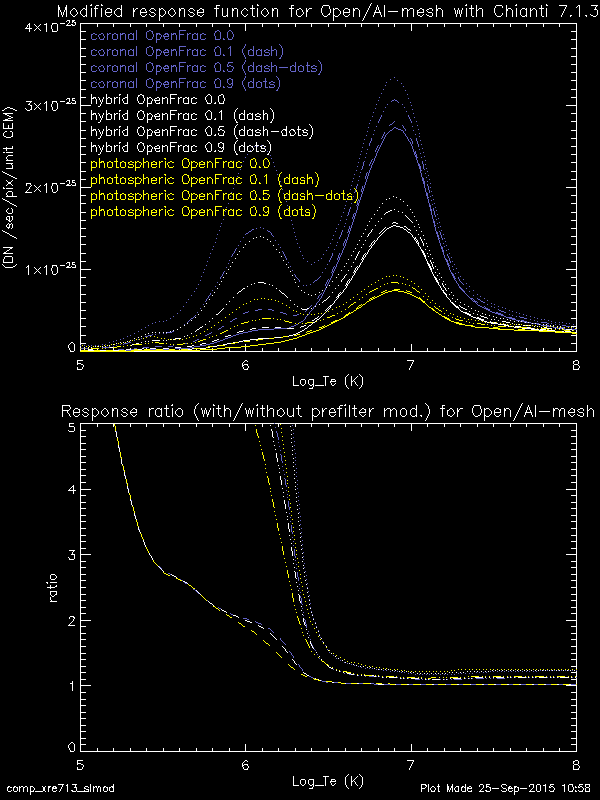
|
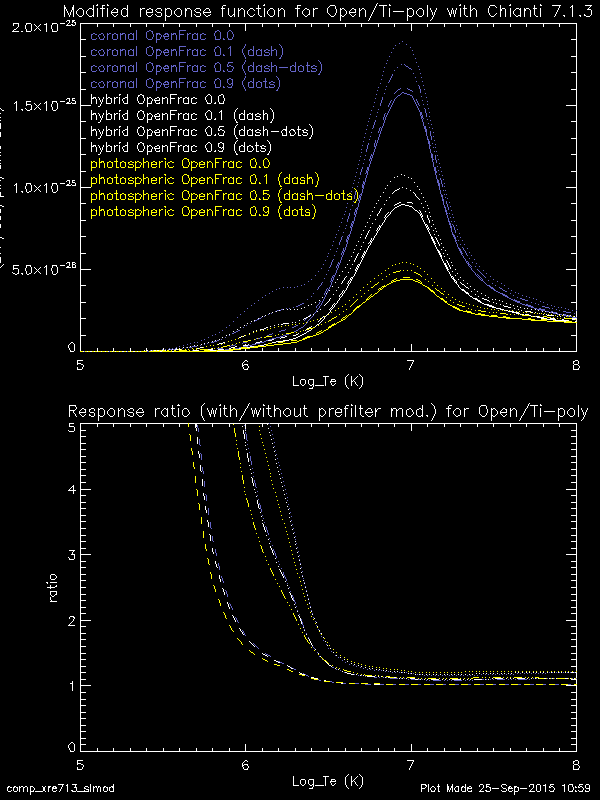
|
| Al-poly/Open | Thin-Be/Open |
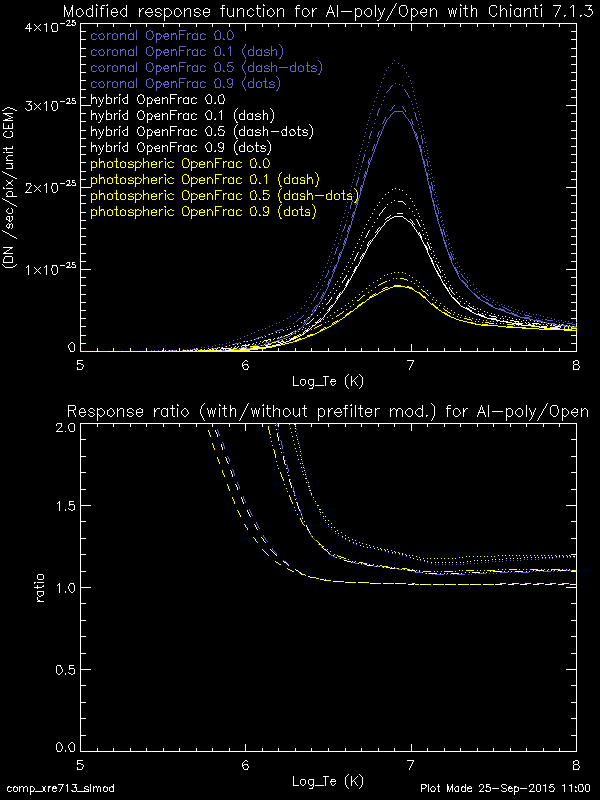
|
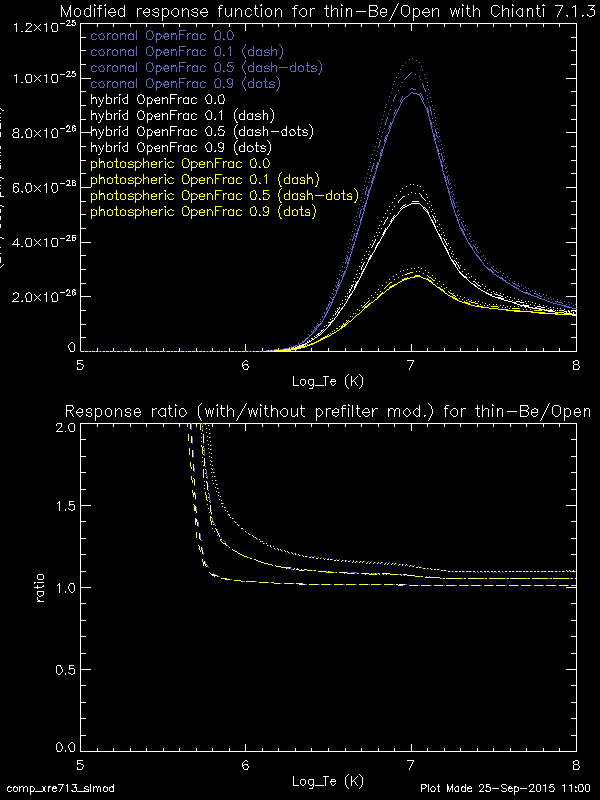
|
| Open/thick-Al | Open/thick-Be |
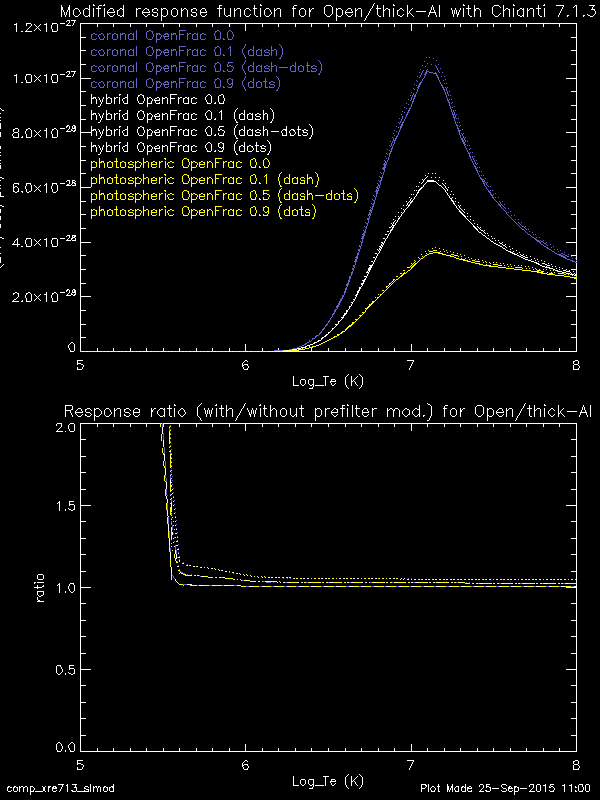
|
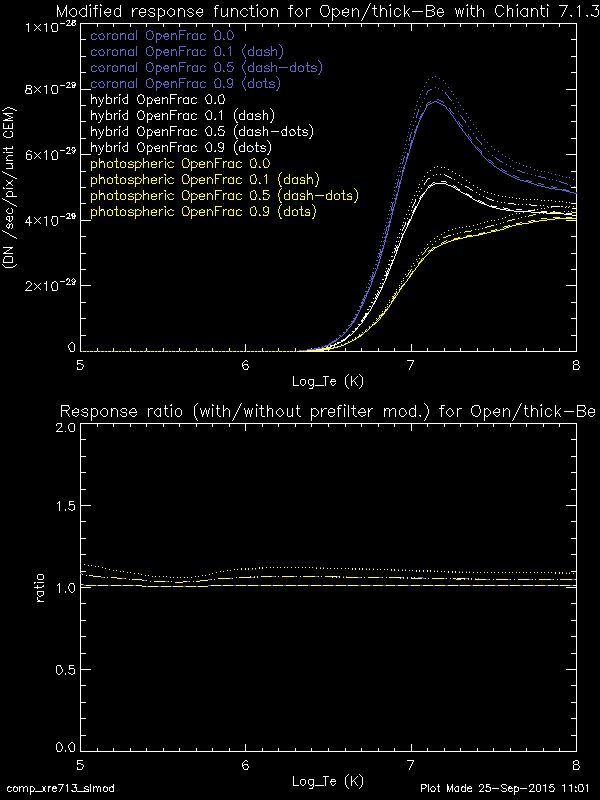
|
| Al-poly/Al-mesh | Ti-poly/Al-mesh |
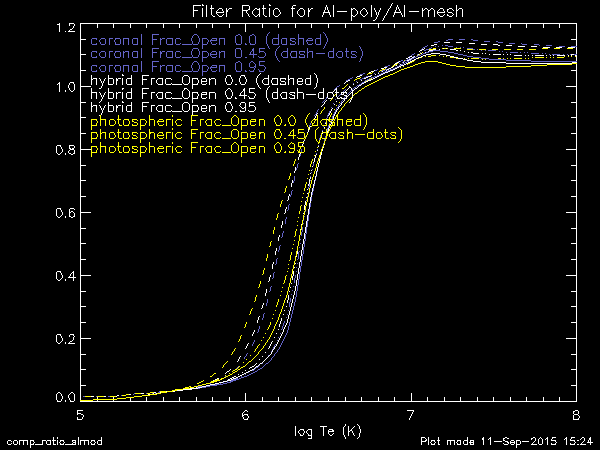
|
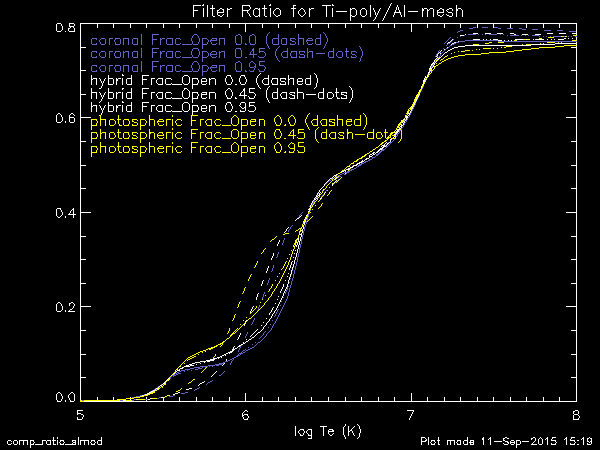
|
| thin-Be/Al-poly | thick-Be/thick-Al |
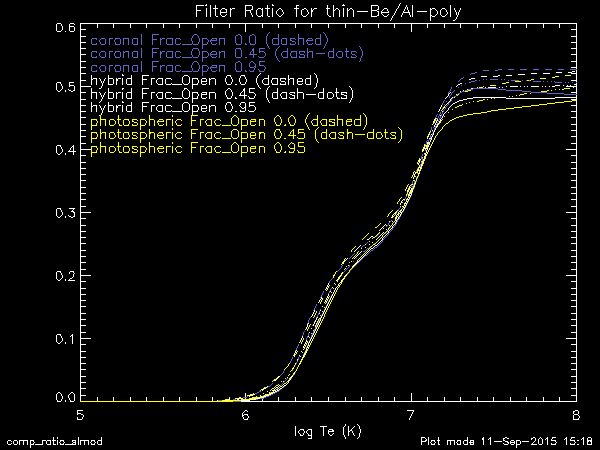
|
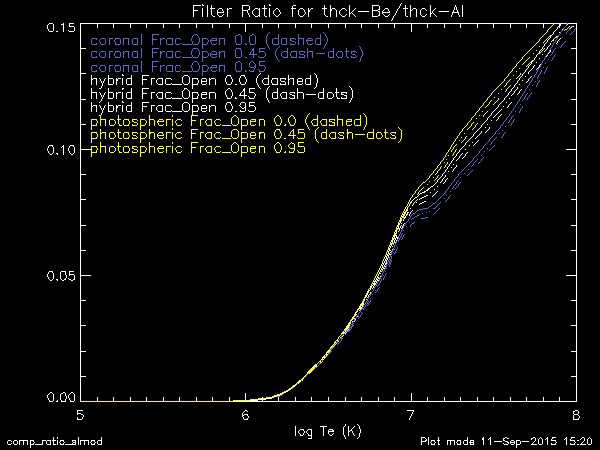
|
 |
|
 |
Ratio of total image intensity : [VLS_close]/[VLS_open]=0.446.. |
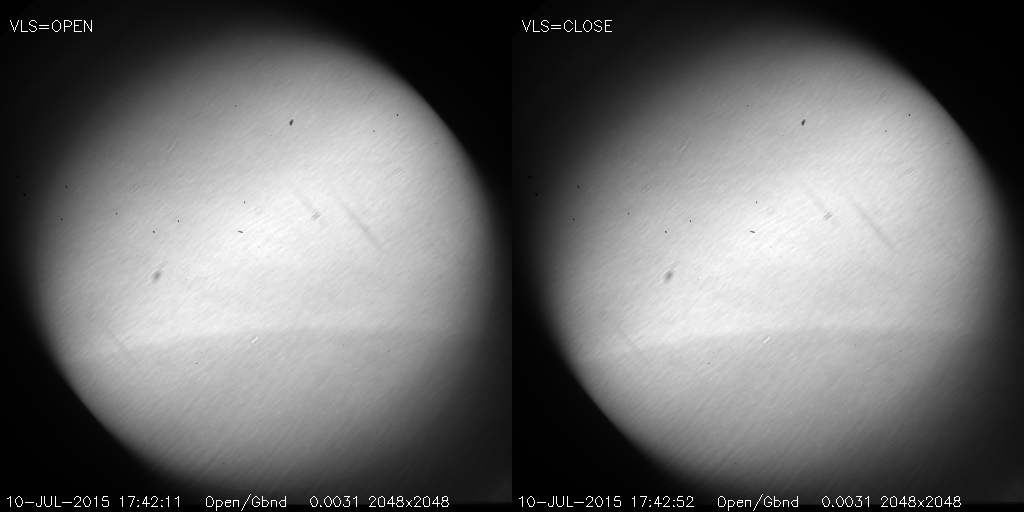 |
|
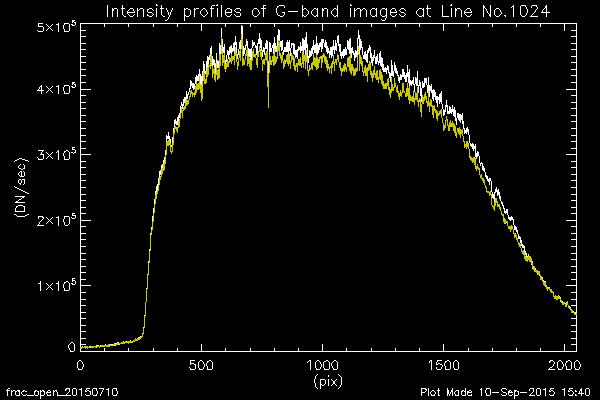 |
Ratio of total image intensity : [VLS_close]/[VLS_open]=0.953.. |